Harry S. Dent Jr.'s Blog, page 80
July 3, 2017
How to Amazon-Proof Your Real Estate Portfolio
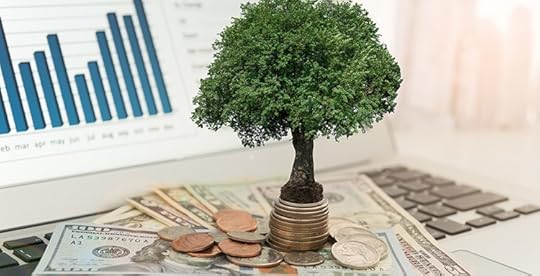
 I recently heard Amazon, the world’s largest online retailer, described as a “bull in a china shop” for the way it’s disrupted industry after industry.
I recently heard Amazon, the world’s largest online retailer, described as a “bull in a china shop” for the way it’s disrupted industry after industry.
But that’s really the wrong analogy. An angry bull lashes out erratically, goring or trampling whatever happens to be in front of it at the moment. Amazon is far too mechanical for that.
The better comparison for Amazon would be a steamroller. Like a steamroller, Amazon slowly and methodically flattens everything in its path.
Bookstores?
Obliterated.
Shopping malls?
On life support… and just barely.
Department stores?
Dying a painful death by 1,000 cuts.
Even grocery stores, convenience stores, and pharmacies – businesses long believed to be “Amazon-proof” – are now at risk of being run over.
With the entire brick-and-mortar retail economy seemingly under attack, retail-focused real estate investment trusts (REITs) have absolutely gotten smashed.
National Retail Properties (NYSE: NNN) – an ultra-high-quality retail landlord I previously recommended in Boom & Bust but have been out of for a while – is down about 20% over the past year, even while the broader stock market is close to all-time highs. And National Retail is the bluest of the blue chips with exceptionally strong tenants.
Some of its more mediocre competitors are down significantly more. Spirit Realty Capital (NYSE: SRC) – which has weaker tenants more directly in Amazon’s path – has seen its stock sink by nearly half in the past year.
What’s the takeaway? Are we looking at a nightmare future of boarded-up shop fronts and decaying, dilapidated retail real estate?
Not exactly.
In fact, Warren Buffett’s Berkshire Hathaway just made a major investment in a retail-oriented REIT. There’s still a lot of value to be had in real estate, at least if you know what to avoid.
So today’s let’s go over some things to keep in mind when putting together an “Amazon-proof” portfolio.
#1: Focus on services.
Amazon drones won’t cut your hair or do your other half’s nails any time soon. Basic personal services, such as barbershops or hair and nail salons, tanning beds and even gyms and movie theaters are about as Amazon-proof as they come.
It’s worth noting that the REIT that Buffett purchased has about two-thirds of its portfolio in properties tied to the service sector.
Shopping malls have been dying for years. I don’t consider that up for debate. But the strip mall next to your house – the one that probably has a dentist, a Starbucks and a dry cleaner in it – should be just fine. Amazon is not realistically a threat here.
#2: Focus on demographics.
One of our specialties at Dent Research is using demographic data to forecast consumer spending, and this works phenomenally well with real estate.
Consider nursing homes or assisted-living facilities. With the aging of the Baby Boomers, it’s a foregone conclusion that demand for these kinds of properties is about to go through the roof.
There’s just one big problem with trying to invest in this space: the person picking up the tab is Uncle Sam, via the Medicare and Medicaid programs. And Uncle Sam can – and does – arbitrarily change the reimbursement rate he pays for services.
I have no interest in trying to invest in a nursing home operator. And, for that matter, I wouldn’t want to be a doctor these days either. The risk that the government changes the payment rate and grinds profits to nearly zero is a risk I’m not willing to take.
But I’m perfectly comfortable being the landlord in this situation. While the government is very likely to crimp profitability in the years ahead, it’s not likely to actually drive nursing home operators out of business. As a landlord, you don’t need your tenant to be loaded. You just need them to make enough money to continue paying the rent.
One of the most profitable recommendations in Boom & Bust’s history was in a REIT that specialized in skilled nursing properties.
And, not surprisingly, that same REIT recently popped up on my friend John Del Vecchio’s quality screen in his newsletter, Hidden Profits. (Learn more about John’s approach here.)
#3: Be careful with hotels, office buildings, and apartments.
President Trump will very emphatically tell you that he’s never personally been bankrupt, and I believe him. But in his career as a hotel and casino mogul, he’s had a handful of colossal failures.
Hotels and casinos tend to be expensive trophy assets that, because of their high purchase prices relative to the rent received, often fail to generate a reasonable return for their investors.
They’re also highly cyclical and get hit hard during recessions when business travelers and vacationers cut back on travel. The same is true of ritzy office buildings and high-priced luxury apartments.
Boring, distinctly non-sexy properties like storage units and warehouses often make far better investments than trophy assets because the rents collected tend to be high relative to the price paid for the properties.
So again, avoid trophy assets or REITs that buy trophy assets and focus instead on less exciting addresses that throw off a lot of cash.
#4: Remember, real estate is all about cash flow.
And, finally, remember that real estate is first and foremost an income investment.
This makes it perfect for my newsletter, Peak Income. I currently have three REIT investments in the model portfolio, and I’m looking to add a new one this one that has all of the characteristics I covered today: It’s service-based, is backed by strong demographic trends, is delightfully boring, and throws off a tremendous amount of cash every quarter.
And, most important of all, it’s Amazon-proof.
Click here to learn more about how you can get in on the action!

Charles Sizemore
Portfolio Manager, Boom & Bust Investor

The post How to Amazon-Proof Your Real Estate Portfolio appeared first on Economy and Markets.
June 30, 2017
What Should the Fed Be Worried About?
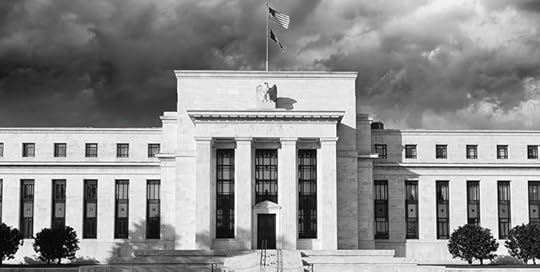

You’re probably a little fed up with the Fed, but it’s worth paying attention to our nation’s central bank, even if it holds less influence than it would like to think.
Let’s talk brass tacks for a minute.
There are normally 12 voting members of the Federal Open Market Committee (FOMC): seven Board of Governor (BOG) members, the president of the Federal Reserve Bank of New York, and four of the remaining 11 Reserve Bank presidents, who serve one-year terms on a rotating basis.
But because of three vacancies, there are only nine voting members. Early next year, the terms of two more officials will expire – including Fed Chair Janet Yellen.
The BOG members are appointed by the President of the United States and serve 14-year terms. Unless President Trump re-appoints Yellen, she is expected leave the Fed on February 1, 2018. And Vice Chairman Stanley Fischer’s term is up June 12, 2018.
I hope the Trump administration is working overtime to find candidates to fill the current three open vacancies, not to mention possibly another two next year! The FOMC is down by a quarter of its voting members and the BOG may only have two (of seven) left by this time next year.
Many of us are concerned that Fed policies of the past decade are pushing us to a tipping point. The results from the past three interest-rate hikes aren’t very encouraging so far. If there’s any hope to see a substantial change of direction in the Fed during the Trump Administration, he needs to fill the vacant seats.
For the time being, stocks are still near all-time highs. I worry this will spawn complacency, even though bonds are acting like we’re on the precipice of a real crisis.
I’ve been writing for weeks about the fact that the yield curve is flattening… and that’s usually an ominous sign. When long-term rates drop below short-term rates, the yield curve is inverted. And when that happens, a recession is sure to follow. An inverted yield curve has correctly predicted all past recessions going back to the 1960s.
So why isn’t the Fed alarmed with the flattening yield curve? New York Fed President William Dudley said Monday that a flattening yield curve is not a negative signal for the economy.
In a word: Whaaat?
Well, that comment, along with his comment that halting rate hikes would imperil the economy, led to a short-lived Treasury bond sell-off. But buyers came back quickly, which led to new 2017 lows in yields within a couple days. It almost goes without saying, but here it is again: The Fed’s ability to move markets and market sentiment with well-placed quotes shrinks more and more by the day, taking its credibility along for the ride.
It’s no secret that Fed officials are puzzled as to why inflation hasn’t reached their 2% target. Chair Yellen continues to point out that unemployment is low unemployment and the economy is growing, a combination that, in theory, at least, should produce inflation.
The problem seems to be that the economy isn’t growing enough and wages aren’t growing fast enough, which keeps consumer spending down and corporate profits depressed. When companies aren’t expanding and making more money, wages won’t grow. It’s a vicious cycle!
Sure, the abnormally low interest rates of the past decade have allowed us to finance cars and homes on the cheap while fueling rising home prices and a surge in auto sales. But low interest rates haven’t seemed to translate into higher corporate profits via pricing power and higher margins.
Fed-enabled low interest rates translated into more stock buybacks and higher stock prices, though. And it’s not just stock prices but other asset prices as well.
After the first housing bubble popped in 2006-07, Fed policy is helping fuel another. Low interest rates and easy mortgage credit have helped pump demand. Prices have met or exceeded those in the last bubble, even though existing sales are still 20% lower and new home sales are 40% off of where they were at the peak of the last bubble.
You don’t need me to tell you that these are not good signs, no matter how you slice them.
The Fed wants us to believe that declining inflation, low wage growth, and overall low economic growth are just temporary, insisting its current rate-hiking path is the proper one to head off future spikes in wage growth and inflation.
But is the real goal to just take some air out of current asset bubbles?
That’s what I’m thinking. I believe the Fed’s current policy is meant to take some air out of the asset bubbles they’ve created, not to avert an overheating economy. The problem is that bubbles usually pop, and if that happens our central bankers will quickly reverse course.
If the stars don’t magically line up for the Fed (like a turnaround in retail sales, growing inflation, growing labor participation, and/or a slowly deflating stock and real estate bubble), the Fed could ultimately start cutting rates.
And if another financial crisis rears up, the Fed can forget about reducing its $4.5 trillion balance sheet. In fact, it may be forced to add to its balance sheet with more QE! Remember, the last Fed statement said as much.
Yellen has a lot to worry about between now and when her term is up early next year. I’m pretty sure she and her counterparts are crossing their fingers that nothing bad happens anytime soon.
I’m not sure if was Yellen’s comment earlier in the week about the unlikelihood of another financial crisis happening in our lifetime or just the fact that bonds were overbought. But, my Treasury Profits Accelerator readers just banked a near 73% gain yesterday! Not bad for a trade we were only in for eight days.
You can prepare for and profit from surprises in the financial markets, and specifically in the Treasury bond market with Treasury Profits Accelerator.

Lance Gaitan
Editor, Treasury Profits Accelorator

The post What Should the Fed Be Worried About? appeared first on Economy and Markets.
June 29, 2017
Yellen’s Delusional Statement Guarantees a Crash Is Around the Corner
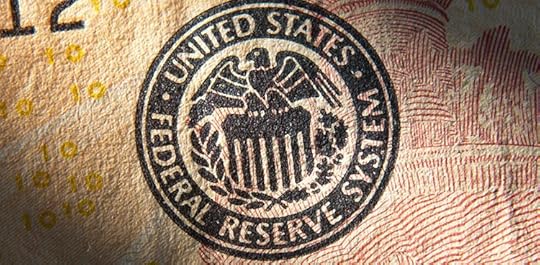
 Janet Yellen Said What!?
Janet Yellen Said What!?She just had to do it!
Human behavior and its accompanying delusion is just so predictable! Earlier this week, she straight up said that “she does not believe there will be another financial crisis in her (our) lifetime…”
WHAT?!
She believes this to be true because of the banking reforms since 2008.
But that’s just ridiculous. All they have done with free and cheap money is recapitalize the banks at the expense of savers and shifted all the risk to the private sectors.
Free money has doubled leveraged loans and corporate debt, and created massive artificial financial engineering.
Consumer and total debt is at record levels. Subprime auto loans have exploded, and student loans continue to grow.
Stocks have exploded to valuation levels that are nearly as high as 1929, and actually higher than even the early 2000 historical extremes, when you adjust for much lower economic and earnings growth. (I explained this in the May issue of Boom & Bust.)
That artificial wealth can be liquidated in the blink of an eye, and it will be with the first crash in this bubble. Stocks could drop 40% or so in the first two or three months, just like they did in late 1929 and early 2000!
Global debt has grown more than $60 trillion since the last bubble peak.
Every measure of debt and bubble-behavior says that there is the highest chance of a financial crisis and crash!
Yet Janet Yellen thinks we won’t see another financial crisis in our lifetime!
Do you know what she essentially just did?
She essentially just guaranteed that we’ll see a crash. And I don’t say this because of Murphy’s Law or any kind of idiotic superstition. I base this prediction on history…
Every statement of this nature has been issued near the top of a bubble, and every time it’s proved to be the final sign that the bubble is very close to bursting.
There was Irving Fisher’s statement in October 1929: “Stock prices have reached what looks like a permanently high plateau.”
There was John Maynard Keynes comment in March 1929: “We will not have any more crashes in our time.”
Ben Bernanke told us in 2007 that “the subprime crisis was contained,” just before it roared its ugly head. The Director of Research at the Fed still “painted a benign picture” in his forecast in December 2007 just as the crash and recession was beginning.
This is the human propensity to want nirvana. Economists always think they can end the business cycle – as if that would be a good thing. It wouldn’t be. Instead it would be the end of innovation and growth, as Japan has already proven in the past 27 years.
Humans naturally have more confidence in a boom or bubble the longer they last, when the truth is that such trends only insure that there will be another recession or crash.
Right now, the VIX (measure of volatility) for the stock market is the lowest and most complacent it’s been in recent history. It’s closed below 10 more times than I can remember.
Everything points to the greatest crash of our lifetime… and this statement by our Fed Chair seals that fate.
Get your Conestoga wagons ready… or, even better, listen to this presentation from Adam about how to profit from volatility in booms and busts.

Harry
Follow me on Twitter @harrydentjr

The post Yellen’s Delusional Statement Guarantees a Crash Is Around the Corner appeared first on Economy and Markets.
June 28, 2017
The Three Biggest Lies About Volatility
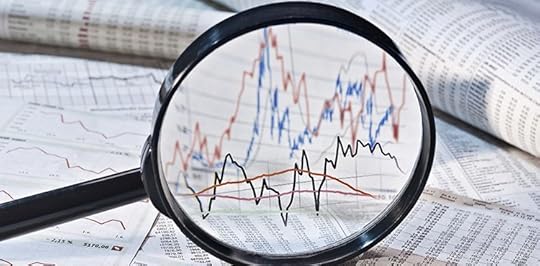
 Volatility gets a bad rap.
Volatility gets a bad rap.
The media typically portrays it as the financial world’s evil villain personified, saying things like…
“Volatility reared its ugly head on Monday.”
Or…
“Volatility is striking fear into the heart of the masses.”
You can almost picture the CGI monster Hollywood would create – the “Volatility Viper” – with its ten snake heads and blood-dripping fangs, snapping at Wall Street suits as they run for their lives.
And after reading enough of this fear-laden commentary on volatility, it’s easy to understand why ordinary investors have become conditioned to fear and avoid it – at any cost!
We’re told to worry about volatility when it’s too low, since that suggests investors are being too complacent – aka, idiots with their heads in the sand.
We’re also supposed to worry when it’s shooting higher, almost as if volatility itself is the cause of the stock market’s drop that day – (Psst: it’s never the cause!)
And even though investors have been clamoring for smooth-sailing investments for years now – as evidenced by the huge amounts of money flowing into “low volatility” stock ETFs – I’m going on record today, to say:
You should put your money to work in high-volatility investments if you want to grow your nest egg into a small fortune.
Although, before I explain why, and how, I want to tackle the three biggest lies you’ve been told about volatility. They’re lies that, if you believe them, are already costing you a fortune.
1. The biggest lie about volatility is… Volatility is “Bad”
As I told the beta-testers of my new 10x Profits service back in December: Volatility is neither “good,” nor “bad,” – it just “is.”
It’s a simple numerical measure that describes to what magnitude a stock or ETF typically moves – either up or down.
But for some reason, you never hear the financial media talk about upside volatility.
Two weeks ago, when shares of grocery retailer Kroger Co. (NYSE: KR) fell 26% in two days… you read about volatility “rearing its ugly head.”
But when Whole Foods Market (NYSE: WFM) jumped 20% higher over the same two days… I bet you couldn’t find a single headline that read: Volatility Praised for Boosting Whole Foods 20%.
My point is… volatility gets all the blame when it strikes on the downside, and none of the credit for above-average sized moves on the upside.
And that’s why investors have been conditioned to fear “high volatility” investments – even though, assuming the downside volatility can be managed, upside volatility can make the difference between earning 8% a year… and earning 65% a year!
Bottom line: you need some high-volatility investments in your portfolio if you want to earn big profits.
Now, let’s turn to the biggest lies told about the most-heavily traded “volatility ETF” in the world… the infamous VXX.
2. VXX “Hedges” the Risk in Stocks
The iPath S&P 500 VIX Short-Term ETN (NYSE: VXX) hit the market in 2009 with a simple and convincing pitch: buy it to “hedge” the risk in your stock portfolio.
Simply put: VXX is designed, in general, to go higher when volatility goes higher. And since volatility tends to rise when the stock market falls… it was billed as an easy way for everyday investors to buy “portfolio insurance.”
Well, that hasn’t actually worked out so well.
Take a look at this chart, which shows the percentage change of VXX since its January 2009 inception:
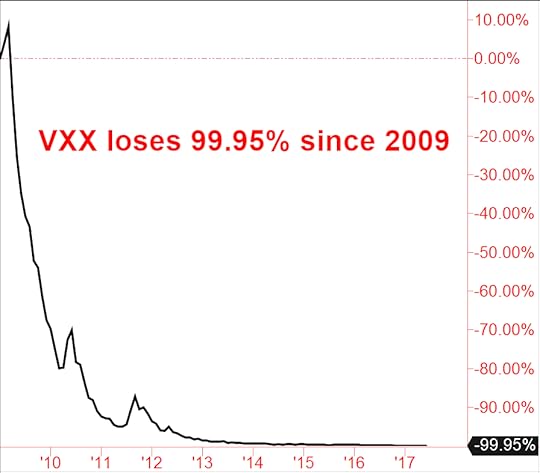
That’s right… $10,000 invested in VXX, in 2009, is worth just $5 today!
Not only has VXX not worked well as a “hedge,” it’s been an incredibly powerful wealth destroyer… completely duping unsuspecting investors who thought they were being prudent by buying and holding it.
Now, it didn’t take long for people to figure out VXX was problematic for ordinary investors. It went into freefall almost immediately – losing 66% in 2009 and 72% in 2010.
And that dismal performance led to another big lie about volatility and this newly-introduced volatility ETF…
3. VXX is Worthless… Don’t Touch It With a 10-Foot Pole
Like volatility itself, VXX, and its counterpart “inverse volatility” ETF, XIV, are not inherently “good” or “bad.”
It all depends on how, and when, you use them.
You see, while shares of VXX have absolutely cratered alongside rising stock prices… shares of XIV are up nearly 800% since their November 2010 inception.
So while the S&P 500 is up nicely since then, gaining 105%… this inverse volatility ETF (XIV) has gained seven times more… enough to turn a $10,000 stake into almost $90,000!
Now, even though both XIV and VXX have produced some truly amazing profits – if you had bought the former, and sold-short the latter – I’ll be the first to echo the warnings of many opponents of these volatility products.
First, these are NOT “buy-and-hold” investments.
And second, unless you’re a professional, you should NOT try to “go it alone” with them.
I’ve been studying and trading financial markets for well over a decade now. And I’m convinced that volatility products are truly the next best thing since sliced bread… but only if you know how, and when, to use them.
In fact, that’s pretty much been my sole focus over the past two years… researching what I call volatility “booms and busts,” and how to trade them.
Since last December, a small group of beta-testers have been test driving my model, which simply tells us:
When to go long volatility (with a purchase of VXX), and
When to go short volatility (with a purchase of XIV).
It’s really that simple.
My research tells us if we’re in one of the market’s three “safe” environments… environments that have historically led to annualized returns as high as 151%, from XIV (our “inverse” volatility ETF).
And it warns us when there’s “trouble ahead” – when volatility is poised to rocket higher. When that happens, we make a simple switch into VXX, which returns 51% annualized – for short periods of time – when my model flashes its warning signal.
Essentially, by switching between XIV (when it’s “safe”) and VXX (when it’s not), we’re able to play both sides of volatility booms and busts. We’re able to get most of the “good” from these powerful volatility products, while also avoiding most of the “bad” in them.
Remember, even if the financial media would rather keep you scared and timid… volatility isn’t “bad,” and attempting to avoid it at any cost is, in fact, probably costing you a small fortune!
Instead of running from it, you should embrace volatility… and learn to trade its booms and busts like a pro.

Adam O’Dell
Editor, Project V
Follow me on Twitter @InvestWithAdam

The post The Three Biggest Lies About Volatility appeared first on Economy and Markets.
June 27, 2017
Canadians Have Lost Their Ever-Loving Minds!

 I’ve been seeing a lot in the news lately about Canadian and Australian real estate prices. Here’s just a sampling:
I’ve been seeing a lot in the news lately about Canadian and Australian real estate prices. Here’s just a sampling:
New Brunswick real estate offers a lesson on peak housing prices
Condo flipping on the rise as Vancouver market heats up
Face it Canada – you’re a real estate addict and no one wants a cure
Canada real estate industry welcomes Buffett to the neighborhood
Canada’s red hot real estate heats up apartment market to heights not seen in 30 years
Canada is on the ‘A-list’ for commercial real estate investors, in a world of uncertainty
Most of what we’re hearing is that there’s little to worry about with our neighbor’s real estate prices shooting to the moon.
Well, as I told 5 Day Forecast readers yesterday, there IS something to worry about. Something BIG.
Today, I’ll share with you what I told Boom & Bust subscribers yesterday…
Between early 2006 and late 2012, real estate in the U.S. took a whipping worse than what the Great Depression dished out. It lost 34% compared to the 26% it shed back in the early 1930s.
But property prices in Canada and Australia hardly paused, and then they continued their march higher.
Canadian home prices are now 84% higher than in the U.S.!
Despite Canadian’s slightly lower incomes!!
And the Aussies’ are even higher. Home prices in Australia are now 107% higher than those in the U.S.!
It’s terrifying. Stephen King should turn it into one of his horror stories. It’d be a best-seller.
Look at this chart…

You can see how the trends in prices correlated closely for three decades, since 1975. But from early 2006 forward, the U.S. diverged, trending downward while all other English-speaking countries – including New Zealand, Great Britain, Singapore, and Hong Kong – seemed to dust themselves off and continue on.
Turns out, that was a blessing in disguise for U.S. property owners. It means that in the next larger and more global real estate crash, we’ll suffer less than our counterparts.
Both Canada and Australia’s real estate prices went exponential again after 2012. And to me, that suggests we’re in the final “orgasm” phase of these bubbles.
During my last speaking tour of Australia in late May, mainstream economists were finally admitting their country had a bubble. Now I’m seeing more and more articles about a bubble in Canada, with surging consumer debt.
It’s fuel on the bonfires!
Tread carefully here, readers. There’s trouble ahead…
What My Bubble Model Warns
Since 1975, the gains in Australian real estate values have been 25.5 times, while in Canada they’ve been 11.9 times, and 5.5 times in the U.S.
But the most important point, for me, is early 2000. That’s what I’ve identified as the real estate bubble origin. Gains since then have been 248%, 211%, and 69%, respectively.
My real estate bubble model calls for a fall 85% of the way back to that bubble origin, on average. That would imply a downside risk of 61% in Australia, 50% in Canada, and 35% in the U.S.
However, because of Australia’s stronger demographic trends, I don’t think its real estate market will suffer such an extreme loss. I suspect it’ll lose closer to 50%, but that’s still a kick to the gonads.
The worst-case scenario would see Australian real estate shed as much as 71%, while Canadian property lost 68%, and U.S. prices declined 41%.
All bubbles ultimately succumb to their own extremes. U.S. real estate burst earlier because of our subprime crisis, a problem not experienced in Canada and Australia. But, as home prices head into the stratosphere, fewer people can afford them, and eventually it all comes crashing down.
The median price-to-income ratios are highest in Australia, at 7.0. In Canada they’re 4.7. In the U.S., they’re 3.9 (which is modest, but still high). This means Australians must fork over seven times their income to buy a house!
As an aside, median price-to-income ratios are 18.0 in Hong Kong, 13.0 in China, 10.0 in New Zealand, and 4.2 in the U.K. (although London is higher).
So, the rubber hits the road when it comes to consumer debt burdens, which are heavily weighted with mortgages.
That’s what will put a limit on this bubble, and it’ll happen sooner rather than later. Just look at debt ratios in these three countries…

Since 1995, just before the stock and real estate bubbles, consumer debt to disposable income ratios (after tax) have risen a crushing 215% in Australia (3.15 times), 176% in Canada, and, after our first crash, 107% in the U.S.
It’s time for a debt deleveraging!
And that goes for businesses and their commercial real estate even more because it almost always gets hit harder than residential property.
It may well be that the Canada bubble bursting triggers ours this time around. But Australia is the wild card due to the intensive foreign Chinese buying there.
Don’t believe these bubbles won’t burst. Instead, be prepared.
For the last few weeks, we’ve highlighted the prevalence of fake financial news. I include in this the stories we’re hearing about Canadian and Australian real estate.
To our subscribers who live in those countries… tread carefully. When property prices roll over, the asset becomes illiquid amazingly fast.
And to all our subscribers, watch out for my email on Friday, when I’ll continue this fight against fake financial news.

Harry
Follow me on Twitter @harrydentjr

The post Canadians Have Lost Their Ever-Loving Minds! appeared first on Economy and Markets.
June 26, 2017
Buying a Horse of a Similar Shade: Europe
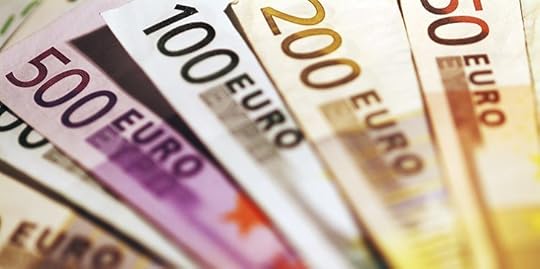
 I put the latest issue of Peak Income together from, of all places, Mamacona, Peru, a seaside town on the outskirts of Lima, where earlier this month I attended the annual Concurso Nacional, or national horse show.
I put the latest issue of Peak Income together from, of all places, Mamacona, Peru, a seaside town on the outskirts of Lima, where earlier this month I attended the annual Concurso Nacional, or national horse show.
For aficionados of the Peruvian Paso, the country’s signature breed, the show marks the single most important week of the year, outranking even Christmas and New Year’s Day. If you argue to the contrary with a Peruvian cowboy, you’re likely to get horsewhipped.
I’m the first to admit I’m not a true “aficionado.” To have afición is more than simply being a “fan,” as the Spanish-to-English translation suggests. The word additionally implies deep knowledge, expertise, and instinct.
Though I make the effort, I have none of the above. At all.
Despite growing up in Texas, I can barely distinguish a horse from a mule. But my wife’s family – who have bred Peruvian Pasos competitively for three generations – have afición in spades, and I brought my wife and kids to Peru to root for my father-in-law and brother-in-law in the competition.
My beat is income investing, not show horses. But you’d be surprised how the two can overlap.
A good, prize-winning horse isn’t that different from a stock.
Sure, you can try your luck “flipping” a horse, buying it low and selling it high to another aficionado. Or, you can turn it into an income vehicle and hold on to it for a while, collecting “dividends” along the way via stud fees.
As a case in point, my wife’s grandfather died young, in his 50s. But the stud fees generated from his champion of champions stallion supported his widow in retirement for years.
That horse would likely still be paying her retirement bills but for the fact that horses, unlike dividend-paying blue chips, don’t live forever.
Playing with the numbers a little, a $250,000 prize-winning stallion could generate something in the ballpark of $10,000 to $20,000 in annual stud fees depending on how aggressively you wanted to breed him. That works out to a “yield” of 4% to 8%.
I’m not suggesting you run out and buy a show horse to fund your retirement needs. That would be utterly absurd. And I can’t imagine it would end well for you.
Apart from the initial cash outlay to buy the horse, you’d need infrastructure (like a stable to put him in) and a small army of personnel to care for and feed him.
If the cash expenses didn’t bleed you dry, the headache of dealing with the logistics would likely drive you mad.
I prefer income investments that sit quietly in my brokerage account and don’t require food, water, and veterinary expenses.
These are the kind that I recommend in my income-based newsletter, Peak Income.
Last month I made the case for diversifying globally. And – to subscribers earlier this month – I extended the argument, recommending a fund featuring healthy allocations to the major European exchanges and broad sector diversification. I expect it to generate double-digit returns during our holding period.
While I still see upside in U.S. stocks, momentum has clearly shifted overseas. Just take a look at the year-to-date returns of our major trading partners in Europe and of emerging markets collectively.

French, emerging-market and German stocks are all up over 17%. Even the U.K. – which faces two years of bitter Brexit negotiations and a very uncertain future – is modestly outperforming this year.
There are a couple reasons why American stocks are lagging. The first is the effect of currency moves. The U.S. dollar has been weak this year, and assets denominated in foreign currencies have better returns when translated into dollars.
But there’s an even bigger reason, one that I detail in this month’s issue, where we’re buying Europe on the cheap.
If you’ll allow me a baseball analogy, the bull market in American stocks is probably somewhere around the seventh-inning stretch, whereas we’re barely past the ceremonial first pitch in most of the rest of the world.
Don’t get me wrong, there’s a lot to be concerned about in Europe long term: demographic problems, the refugee crisis, the persistent threat of terrorism, and, maybe worst of all, the euro currency itself. It might be the worst idea in a long history of bad ideas to come out of the Continent.
But today, with Europe’s cheaper valuations and its stronger momentum, it makes all the sense in the world to buy European stocks with a relatively short time horizon… and to get paid handsomely while doing it.
Don’t believe me? My overseas recommendation from last month is already up about 4%, and that’s with a low-risk approach, as we seek to do in Peak Income. So you can rely on steady streams of income, whether you’re in retirement, close to it, or just thinking about it.
Click here to learn how to subscribe.
If you’ve missed this month’s issue, click here to read it now.

Charles Sizemore
Portfolio Manager, Boom & Bust Investor

The post Buying a Horse of a Similar Shade: Europe appeared first on Economy and Markets.
June 23, 2017
Spare Me the Fed’s Latest Data-Driven Drivel


In this hyper-tense, polarized nation where words now count for more than deeds, we need a running list of who is offended by what so we can steer clear of landmine nouns, adjectives, and titles. I guess millennials keep a checklist on their phones.
Maybe there’s an app for that.
On my iPhone, I have the “Hey Siri” function. The phone is always listening for those two words in short succession, at which point she asks how she can help.
I bet I could make an app that’s always listening for offending words.
When one hits the airwaves, the phone could buzz and ring, signaling me to 1) identify the offending party for an immediate rebuke, and 2) determine if I should be paid because I was subjected to such horror. I could even give it a creative name, using the term for shaming others for a perceived slight. It would be the “Cry Bully App.”
The more I hear about college campus protests and the fragile egos of our youth, the more dispirited I become. In the words of Madeline Kahn in the movie Blazing Saddles, “I’m tired of being tired!” (Now, there’s a movie you couldn’t make today!)
Typically I find refuge in the financial pages, where numbers still make sense and actions take precedence.
But there is one group that babbles more than others, doling out polemics and creating linguistic smokescreens, all the while pretending it’s meaningful. The worst part is, we as investors and financial market professionals are required to listen to them.
It’s like being stuck in a lecture hall with a professor that drones on. You can’t leave because you need the class, but staying put is hard on the brain.
And then the media hangs on every word.
Every. Single. Word.
Reporters twist each sentence. They parse every press release, comparing it to previous memos, looking for subtle clues to massive changes.
But in the end, it doesn’t matter. Eventually, the pied piper utters the same, fateful words. Data-driven.
Of course I’m talking about the Fed and Chair Yellen. While what they say isn’t exactly fake news in the sense that it is contrived, there’s no doubt that it’s usually not news.
How can it be news when the leaders of the central bank of the most powerful financial nation on the planet say for the ten-millionth time that their decisions are data-driven? And that they will change their minds if the data changes in the next few months? Or days, or minutes?
What statement that comes before such hedging could be important enough to write about or discuss?
We’ll raise rates, unless the data says otherwise.
We’ve heard that for years. Yes, the Fed finally started inching rates higher in late 2015… from zero!
They had a grand plan to raise rates three to four times in 2016. They settled on once. Their forecast for this year was four to six rate hikes. It looks like we’ll get two.
And their GDP forecasts? Puh-leeze.
Every year since 2009 this group has estimated GDP above 3%. Never in the current year, but always next year. I feel like I’m driving by Joe’s Crab Shack, where the sign reads “Free Crab Next Tuesday.”
We never quite get to next Tuesday.
Finally Fed officials have thrown in the towel on this one. They now expect GDP around 2% through 2019. Welcome to our reality.
After their latest meeting, the Fed held true to the old wisdom of forecasting. Give a price, or a date, but never both.
They noted how they intend to shrink their balance sheet, which was big “news.” And they told everyone it would be relatively soon. When asked what that meant, Chair Yellen responded that she did not want to define it. In other words, “I’m not gonna tell you!”
But that’s OK. The big wind down was big news anyway. Because it made the papers. It made the airwaves. What it didn’t make was a difference.
After much hemming and hawing, the Fed raised rates by a quarter point. And yet real interest rates (overnight rates minus inflation) remain negative. That’s hardly tight monetary policy. As for investors, they sent yields lower. No fear about inflation or sky-high rates there.
Will they raise rates again in September? Maybe wait until December? Will they actually start to shrink their balance sheet? Will they stick to their outline, sloughing off $6 billion of Treasurys and $4 billion of mortgage-backed bonds each month to start?
Who knows? Even if you asked, and got an answer, it wouldn’t matter. At the end of their reply, they’d add their catchphrase… Data-driven.
Let me know when they actually do something. Until then, I’ll be catching up on old movies that are very funny, and most decidedly not politically correct.

Rodney Johnson
Follow me on Twitter @RJHSDent
P.S. Want something real? Click here to reserve your spot in my colleague Adam O’Dell’s special online event – The Switch That Can Make You Rich – on Monday, June 26 at 1 p.m. EDT. Adam’s been beta-testing a new investment approach with a small group of readers, and is now ready to share all the details, like how he’s netted an average five-year of gain of 1,043% with the strategy.

The post Spare Me the Fed’s Latest Data-Driven Drivel appeared first on Economy and Markets.
June 22, 2017
Smart or Wealthy? Why EQ is more important than IQ
Doctors and engineers are notoriously the worst at investing.
They’re generally “too smart” for their own good.
More to the point, they make the mistake of assuming high intelligence translates into investing success.
(It doesn’t!)
Doctors tend to be studious overachievers. They’re “book smart,” having spent between 11 and 16 years studying medicine. Once practicing, they have enough disposable income to invest… and they assume the path to investment success is similar to the one that got them their “M.D.” – be smart, study hard, and just “learn” how to do it.
Engineers have the same afflictions, plus one more – a strong belief that financial markets work just like circuit boards, or suspension bridges. And they figure once they “crack the code,” or “work out the math,” they’ll be on their way to manufacturing money, just as mechanically as a printing press spits out Wall Street Journals every morning.
Both doctors and engineers overestimate the value of their high IQ, when it comes to investing.
They also underestimate the value of emotional intelligence – which is, simply, the ability to identify and manage one’s own emotions.
I can’t tell you how many angry phone calls I got from doctors when I worked on the trade desk of a brokerage firm in the mid-2000s. I knew they were doctors because they’d tell me as much.
They’d give me an expletive-laced earful about a “bad fill” they thought we gave them, which was completely responsible for their “tanked” trade (even though they were responsible for making the trade).
It was always something like…
“Do you realize I’m the head of surgery at XYZ hospital and I’ve got a seven-figure account with you f***ing idiots?!”
“OK,” I would think to myself, “good for you.”
But what does your IQ, or M.D., have to do with investing?!
Look, I don’t mean to pick on doctors and engineers. They just help me make my point easily, and that is: you don’t need a high IQ to be an extraordinarily successful investor.
In fact, you’re probably better off with an average IQ and the healthy measure of humility that comes with mediocrity.
And I swear… if you can just control your emotions, you’ll be a far better investor than every high-IQ, overachieving ego-maniac out there!
Consider what Warren Buffett has said about intelligence and investing [my emphasis added]:
“You don’t need to be a rocket scientist. Investing is not a game where the guy with the 160 IQ beats the guys with the 130 IQ.
You do have to have an emotional stability and an inner peace about your decisions. It’s a game where you’re bombarded by minute-by- minute options.
It’s not a complicated game. It’s simple, but it’s not easy.
You have to have an emotional stability.”
Well said, Mr. Buffett!
So if we can agree you don’t need a high IQ to be a killer investor… what do you need?
You Need These Two Things
A proven systematic strategy and an ounce of discipline (aka Buffett’s “emotional stability”) are the only two things you need to be an extraordinarily successful investor.
The beta-testers of my newest research trading service know this well. Since last December, they’ve been following the systematic buy and sell signals of my market-timing model, which is designed to profit from volatility booms and busts. And they’ve been following it with discipline.
I have to admit… I got the idea for this project from an experiment done in the early 1980s.
Have you heard of the “Turtle Traders,” who proved that all you need to be successful at investing is a system and discipline?
In 1983, two wealthy commodity traders disagreed over what it takes to be a successful investor.
One thought trading greatness was innate –you were either born with it, or you weren’t.
And I suspect he thought intelligence was the key, “God-given” ingredient.
The other trader thought it was possible to teach an average person how to be a great trader… that success depended as much on “nurture,” as “nature,” so to speak.
The two men decided to settle their debate with a real-world experiment. They placed an ad in the paper inviting anyone who was interested to apply for a program, in which the two successful traders would “teach” the novices how to trade.
The ad said, “No experience necessary” and instructed applicants to simply write “one sentence giving their reasons for applying.” There were no IQ tests involved.
Long story short: the novice traders were given a system, with very specific buy and sell rules. The ones who followed it with discipline made a boat-load of money.
Truly, these were everyday people… with average IQs… with no trading experience.
They were given rules to follow… telling them when to buy and when to sell… and all they had to do was follow the rules!
Within a year, they were extremely wealthy traders!
Now, here’s the final thought I want to leave you with today…
You may never be the “smartest guy in the room” if you’re a systematic investor. Well, at least you won’t sound like it.
Society somehow perpetuates this notion that successful investors are wicked-smart and “in the know.”
They’re the guys at the cocktail party who yammer on about interest rates and the yield curve… who always have a hot “tip” on a stock, since they rub shoulders with CEOs at the gym… who sound as if they wrote this morning’s Wall Street Journal, or last week’s Financial Times.
Investors who follow a system with discipline can’t “talk that talk.” We rarely get invited onto CNBC. And we have to learn to deal with the awkwardness that ensues when a friend of a family member asks that obvious conversation-starter, knowing you’re “into investments” – So, what’s the market gonna do this year?
“Hell if I know!” is my answer.
You see, systematic investors are humble enough to know what we don’t know. We embrace uncertainty, rather than ignore it. We don’t try to predict the future.
And we sure as anything don’t hold ourselves out as “know-it- all’s!”
At some point, all successful investors ask themselves a poignant question:
“Do I want to make money? Or, do I want to sound smart?”
If you answered “make money,” then I highly recommend you join me on Monday for an exclusive special event I’m holding for Dent Research readers.
Like the “Turtle Traders” ad, I’m inviting a small group of readers to join me in a project I’ve been working on for over two years now.
My goal with it is simple: turn everyday folks into extraordinarily successful investing machines.
I’ll be sharing the entire set of “rules” of my strategy – giving you every single buy and sell signal. And I’m committing to being your investing “mentor,” helping you develop the discipline needed to trade the system and win big.
Naturally, spots are limited for this opportunity – go here now to reserve your “seat” for free.
Stay disciplined,

Adam O’Dell

The post Smart or Wealthy? Why EQ is more important than IQ appeared first on Economy and Markets.
June 21, 2017
When Patience Turns to Profits

 It’s hard to know what to think these days. Some say you should sell everything and hide in the cellar. The market may hit new high after new high, but everyone’s afraid of a “correction.”
It’s hard to know what to think these days. Some say you should sell everything and hide in the cellar. The market may hit new high after new high, but everyone’s afraid of a “correction.”
Look, the markets are overvalued, and a correction somewhere down the line is all but certain. But that mean there aren’t real profits to be made. There’s always a chance to make money. You just have to look harder. And looking hard is my bread and butter as a forensic accountant.
I just wrapped up an important issue of my research service Hidden Profits. Instead of recommending a new stock, I took a step back and looked at each position in the model portfolio. I showed readers my thinking in real time, and two positions in particular stuck out as particularly deserving of the title “hidden profits.”
I doubt this will come as a surprise to anyone over the age of 30, but demand for skilled nursing facilities increases with our aging population. Healthcare for the elderly is as personal as it gets, but it’s also an enormous, sprawling business. And not every CEO does right by their patients or their investors.
But I did find one company that bucks this trend. It’s on sale right now because of overblown and unsubstantiated political uncertainty. That’s short-sighted, but it’s good for investors who know better.
As is often the case, the stock price follows dividend growth – and this company regularly kicks its payout up a notch each quarter. It announced another increase along with first-quarter financial and operating results. The new dividend rate represents 9% year-over-year growth!
The stock now boasts a 7.5% forward yield, which is simply too high for its stock price. The dividend will double in just eight years if it keeps rising 9% annually – and that’ll bring the stock with it.
With dividend and stock gains easy to see and little management concern about interminable healthcare policy debates, this company offers a double in just a few short years. Better hurry, though: The market won’t leave it sitting where it is today for long.
This leads me to another company that stood out in my stock-by-stock analysis.
Very profitable investments can languish in trading ranges for a long time for no reason. While other people move on, we pounce.
I’m not worried because I recommend businesses, not stock prices. Like I said, I’m a forensic accountant. I can look under the hood and see exactly what the engine is doing. And in every quarter since my initial recommendation, this special bank has reported increased interest income, continued buybacks, a healthy dividend, a great loan book, and strong capital reserves.
And if interest rates rise, this sweet unknown company will only do better.
The bonus? The stock sells for a big discount to book value. We pay about 50 cents for a dollar of value at today’s price. It’s like a TJ Maxx for stocks!
All lights are green for this stock so cheap it has built-in upside. Plus, the dividend yield is at a multi-year high. We can also expect the annual announcement of a dividend hike in late August. That too will boost the stock.
Sometimes it pays to be patient and take stock of your current situation rather than barreling forward looking for the next big thing. That’s what I did in the last issue of Hidden Profits, and I think you should take a look.
Good investing,

John Del Vecchio
Editor, Hidden Profits

The post When Patience Turns to Profits appeared first on Economy and Markets.
June 20, 2017
Car Sales Were Always Going Over This Cliff

 The Retail Apocalypse.
The Retail Apocalypse.
Carmageddon.
Same story.
Different industry.
And we called both decades ago!
Autos are the last splurge for aging Baby Boomers. Their kids leave the nest and finally the parents can buy the car they wanted, not that damned minivan to taxi kids around.
But as we age, we don’t drive nearly as much and those luxury or mid-life-crisis sports cars last a long time.
So, even though Baby Boomers followed the pattern and bought better cars, they rebuy as often, which causes a decline in auto spending, especially after age 48.
At least, that’s what our research has shown us for years…
We just recently got updated data from the Consumer Expenditures Survey. This allows us to predict not only the broader economy in human life cycle spending, but every consumer sector as well.
Our previous data suggested that new car sales would peak around age 53 to 54.
The new data, from 1996 – 2015 (blue line in the chart), and more recently from 2006 – 2015 (red line) says that auto sales peak closer to age 48 – earlier than we previously thought – and then continue sideways before surging one last time around age 62. Then it’s straight downhill from there.
Notably, car sales first collapse between age 51 and 60.

Guess where the bulk of the Baby Boomers are heading!
Let’s walk through the predictable car buying cycle…
Auto sales first surge into around age 32, along with first-home buying. They peak around age 41, again, along with trade-up home buying. Then they have another surge into around age 48, as their kids leave the nest and they buy the luxury Lexus or sports car that they really wanted (as I said earlier).
But then they don’t drive it nearly as much as they previously spent their time driving around their kids from school to soccer practice to “ecstasy” parties… or whatever.
So that “best car” lasts for 10 or more years instead of four years for the typical soccer mom.
Now the new data shows there’s a final surge into the early 60s, before people retire.
The truth is that car sales tend to plateau between 32 and 62 and lean towards the higher-end sectors, with the sharpest decline between age 51 and 56.
What has kept car sales going after they should have peaked around 2012?
The same thing keeping our economy going: QE or near-free money and lower interest rates.
But that seems to have run its course because the auto industry has only kept its growth going through more liberal lending policies based on lower interest rates and an accommodative Fed…
Did they learn nothing from the last subprime crisis?
Of course not!
Look at this chart…

Total loans for autos are much higher than they were into 2007, and growing exponentially.
Subprime loans, at the lowest credit ratings, are now at $280 billion and rising. In 2007, they reached only $205 billion. When you add in the next red zone of near-subprime borrowers, it’s $405 billion!
Can anyone else smell that?
Yup, it’s the stink of defaults and a worsening downturn in auto sales coming!
Car inventories are piling up on the borders of Mexico. Manufacturers are trying to hide their growing inventories.
GM plans to extend its typical summer shutdown at certain U.S. factories to deal with slumping sales and its bloated inventory.
In fact, car sales were down 0.5% in May, part of a five-month decline. The experts keep guessing things will improve and have been wrong.
They don’t understand that demographic trends are going against this last durable goods market to peak after housing and furniture. And they don’t understand how much this sector has been hyped up by liberal lending, like housing was into early 2006.
This is another sign of the beginning of the end, like plummeting retail sales and big brand failures in department stores and apparel…
Two very smart investors, Buffett and Soros, invested in major retail auto chains in the last few years… we could have told them not to bother.

Harry
Follow me on Twitter @harrydentjr
P.S. We have other advice for Buffett and Soros: They should register to watch our special online event – The Switch Than Can Make You Rich – on Monday, June 26 at 1 p.m. EDT. Our inhouse Quant – Adam O’Dell – will be explaining how he’s been able to identify profits and avoid losing money during EVERY three-, four-, and five-year holding period since 2005… how he achieved an average five-year gain of 1,043% (enough to turn every $10,000 invested into over $100,000)… and how he was able to get a 25-to-1 advantage over a simple “buy and hold” strategy with the S&P 500! Buffett and Soros may not listen to what Adam has to say, but you should. Register now.

The post Car Sales Were Always Going Over This Cliff appeared first on Economy and Markets.



